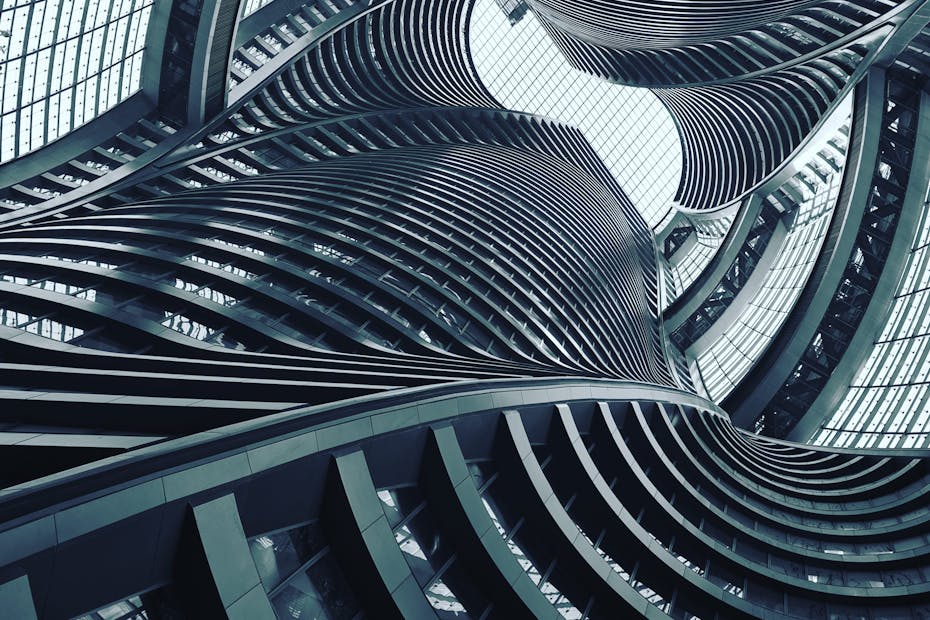Introduction: When Design Overwhelms the Mind
We often celebrate architecture that dazzles — intricate façades, bold geometry, complex interiors. But what happens when design becomes too much? When visual excess, spatial complexity, or sensory overload begin to take a toll on the very people who live, work, or move through these spaces?
Architectural burnout is a growing term used to describe the psychological and physiological fatigue triggered by overdesigned environments. These are spaces where aesthetics override usability, complexity overshadows comfort, and constant novelty offers little room for mental rest. As architects continue to innovate, it is critical to ask: can a space be too designed?
Defining Architectural Burnout
Architectural burnout doesn’t refer to the stress of architects themselves — though that’s a conversation of its own — but rather to the exhaustion felt by users who inhabit hyper-stimulating environments. It’s the subtle psychological fatigue that comes from navigating overly curated, visually intense, or cognitively demanding architectural spaces.
Imagine a boutique hotel with ever-changing lighting, reflective surfaces, irregular layouts, and loud visual patterns. For a brief visit, it’s impressive. But for those who work there daily or live nearby, the constant visual competition can be mentally draining.
This phenomenon is increasingly observed in:
- Retail spaces with aggressive branding and lighting
- Offices overloaded with aesthetic “moments” and Instagram-ready features
- Cultural buildings with complex navigation or disorienting geometries
- Luxury homes with spatial features that prioritize spectacle over ease
When Form Overwhelms Function
Modern architecture often seeks to engage — to provoke emotion, inspire movement, or impress with sculptural elegance. But this pursuit can cross a threshold when form consistently wins over function.
In the push for innovation, design decisions may:
- Prioritize dramatic staircases over logical circulation
- Use materials that look stunning but echo harshly or trap heat
- Offer too many visual stimuli in small spaces, such as clashing textures or patterns
- Obscure intuitive wayfinding through non-linear layouts
While these may work well in editorial spreads or design awards, the everyday user may experience sensory fatigue, difficulty concentrating, or even spatial anxiety — hallmarks of architectural burnout.
The Psychology of Visual Fatigue
From a neuroscience perspective, our brains constantly work to interpret space: depth, proportion, rhythm, contrast, and flow. A well-designed space should support these cognitive functions. But when every corner fights for attention, or when no visual hierarchy exists, the brain receives too much input with no place to rest.
Psychologists refer to this as “cognitive overload” — where the processing demands of an environment surpass the brain’s capacity to comfortably handle them. Symptoms may include:
- Mental fatigue
- Difficulty focusing
- Irritability in the space
- Increased stress hormone levels
In educational settings, for example, studies show that environments with natural light, muted colors, and minimal clutter enhance learning and retention. In contrast, overstimulating designs hinder concentration — a key insight for any architect.

Minimalism Wasn’t Just a Trend — It Was a Response
In contrast to overstimulation, minimalism offered visual clarity, emotional calm, and sensory breathing room. The best minimalist designs — from Tadao Ando to John Pawson — are not cold, but intentional. They celebrate silence, light, and proportion.
The backlash against sterile minimalism in recent years has reintroduced maximalist aesthetics — playful, saturated, layered. While this offers joy, it also reopens the risk of architectural burnout, especially when not grounded in user needs.
The lesson? Excess in either direction can create discomfort. Balance is everything.
Who Suffers Most?
Architectural burnout disproportionately affects certain users:
- Neurodivergent individuals, such as those with ADHD or autism, may find overstimulating environments particularly distressing.
- Elderly users may struggle with navigating overcomplicated spaces.
- Workers in high-design commercial interiors may face fatigue due to unnatural lighting, echoing surfaces, or aesthetic gimmicks that disregard ergonomic needs.
- Children in overstimulated schools may show lower engagement or higher restlessness.
Architecture should be inclusive — and that includes the mental wellbeing of all users, not just design connoisseurs.
How to Avoid Architectural Burnout
Avoiding architectural burnout doesn’t mean sacrificing creativity. It means designing with intention and for the user:
- Design for rhythm: Alternate moments of intensity with calm. Let the eye rest.
- Prioritize intuitive navigation: Let people move through space naturally without confusion.
- Use materials tactically: Avoid reflective or overly patterned surfaces in large amounts.
- Incorporate nature: Biophilic design supports mental health and reduces sensory fatigue.
- Design for longevity: Ask whether a visually intense space will still feel good after daily use.
Reconsidering Success in Architecture
As architects, we often judge success by photographs or visual drama. But perhaps a more important metric is emotional endurance. Does the space still feel good after weeks, months, or years of use?
Architectural burnout invites the profession to recalibrate — to consider sensory wellbeing as a core design value. The spaces we build should inspire, yes — but they must also care, calm, and sustain.
Conclusion: Designing for Humans, Not Cameras
We live in an era where architecture is consumed as quickly as content. But users don’t live in Instagram posts — they inhabit reality, with all its sensory demands. Recognizing architectural burnout is a step toward more empathetic, user-oriented, and psychologically resilient design.
Great architecture doesn’t just impress. It endures — in the mind, the body, and the soul.

Pingback: Burnout Urbanism: How Cities Exhaust Us
Comments are closed.